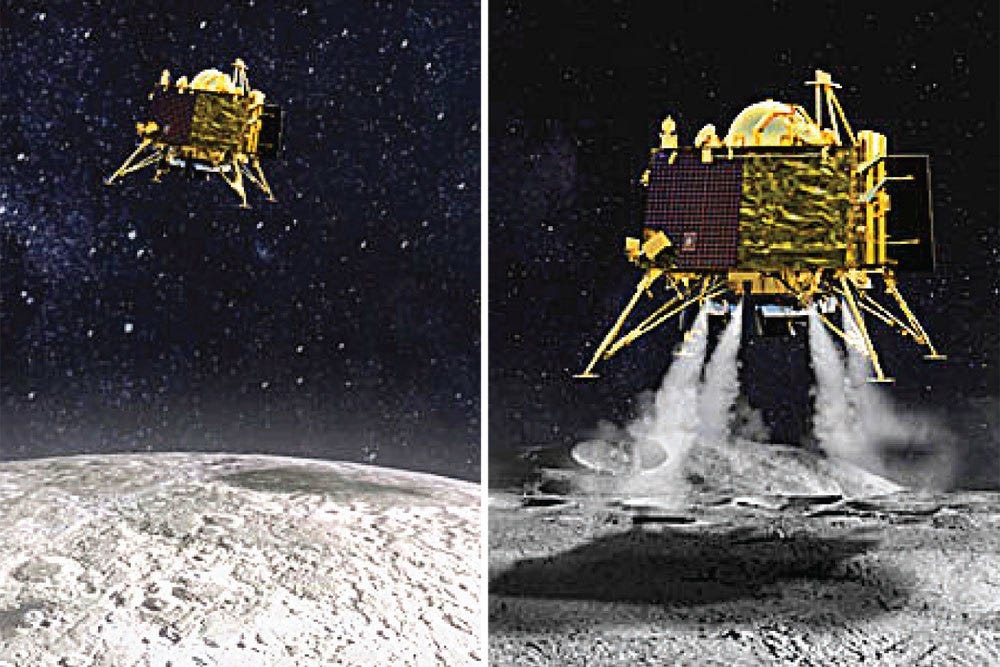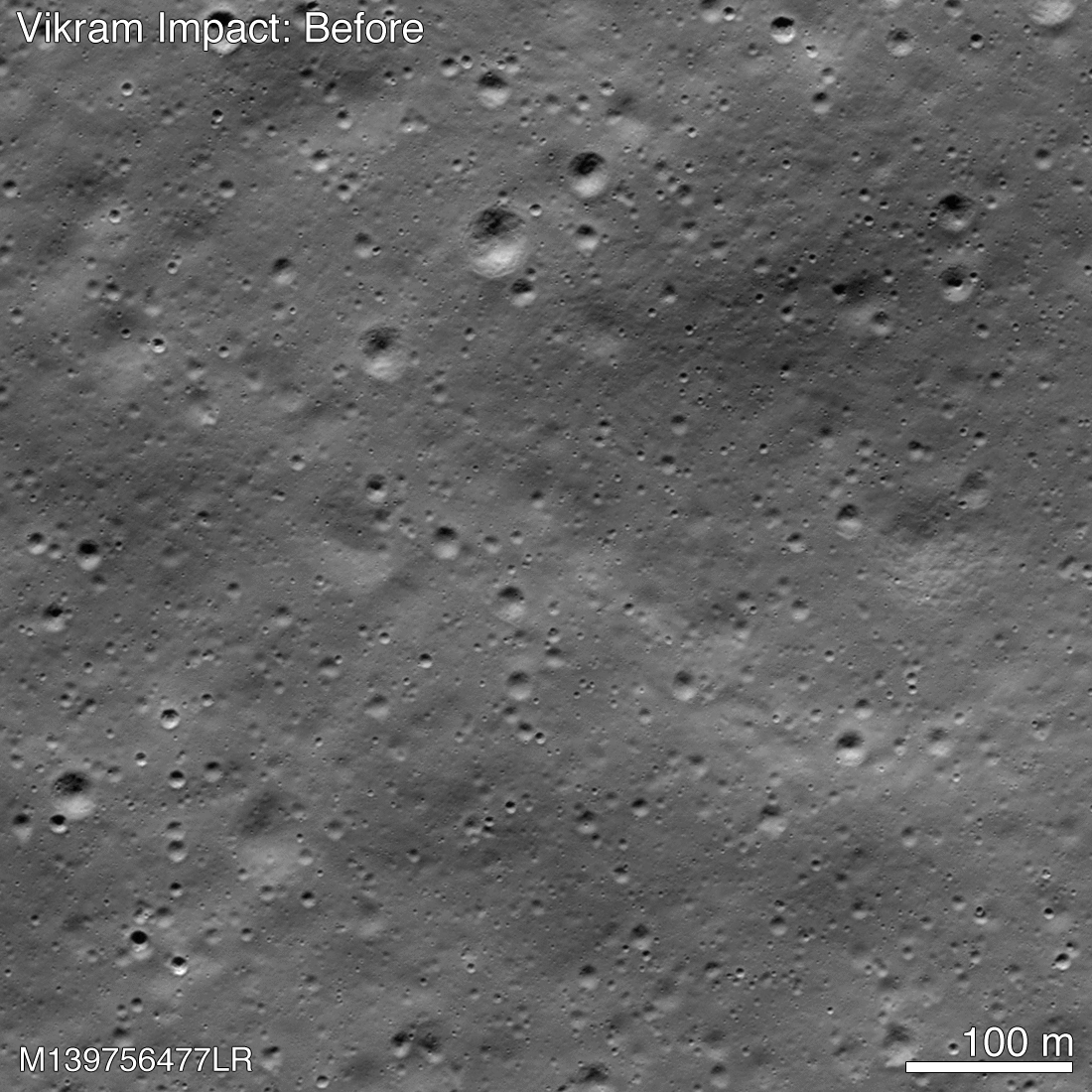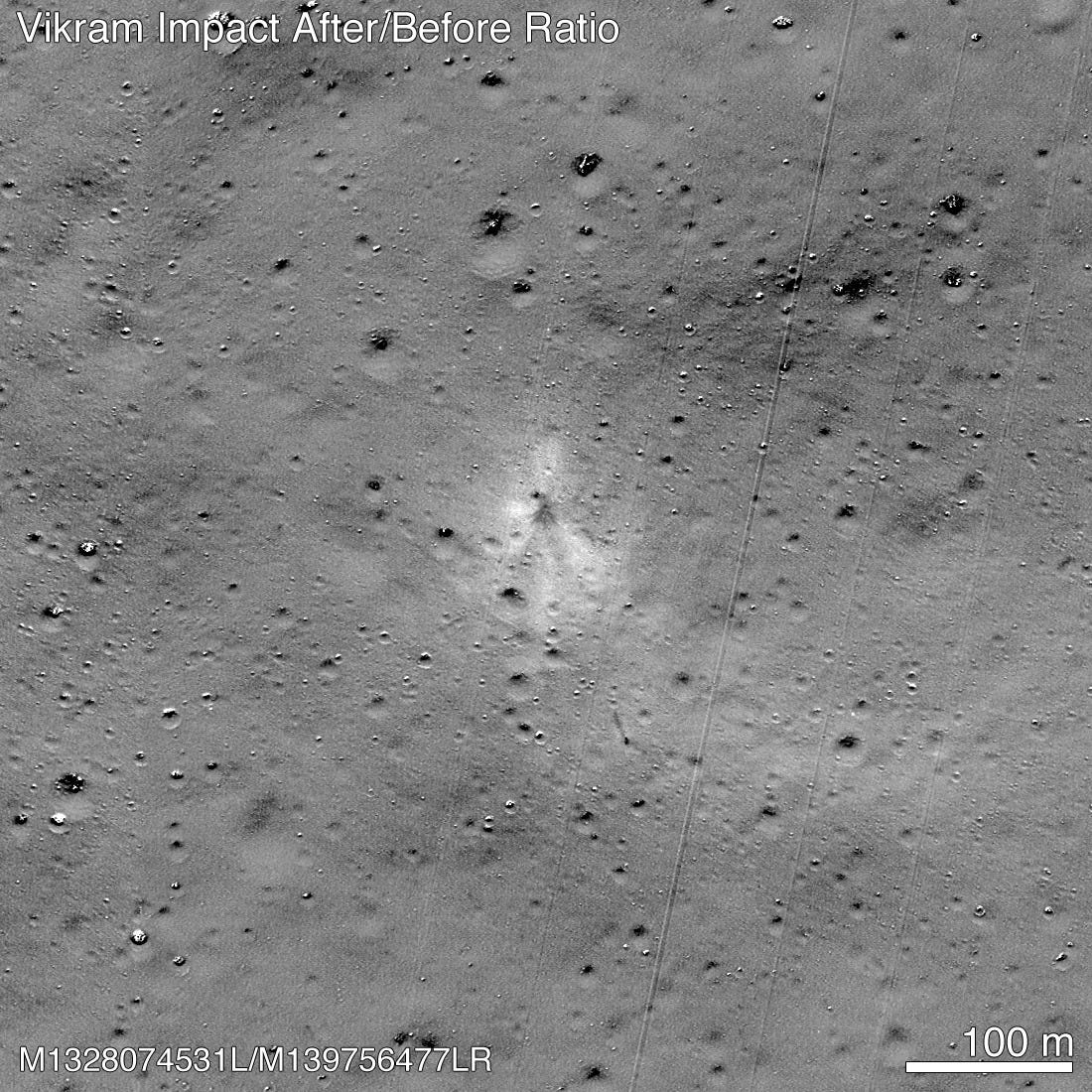Explainer – Why did it take so long to find the Chandrayaan 2 lander?
Challenges involved in spotting a spacecraft on the Moon's surface from space.
India’s ambitious mission to land on the Moon, Chandrayaan 2, failed. The Vikram lander crashed on the lunar surface on Sep 7, 2019, but it was only in December that scientists found it. Why did it take so long to find the lander?
There are quite a few technical reasons for that. Let’s start with a quick recap of what happened on the landing day.

The Vikram lander’s powered maneuvers to land on the Moon worked just fine until it was 2.1 km above the surface. Then it lost communication to Earth. ISRO Scientists in Mission Control could see from the data on their screens that the lander had also gone off-course. That means the lander wouldn’t land at the intended location. And that is what made finding Vikram challenging.
Needle in a haystack
Since ISRO had access to the data until loss of communication, it could crunch the numbers and work out an approximate search area for its Chandrayaan 2 orbiter. Not so much for NASA, whose Lunar Reconnaissance Orbiter (LRO) was tasked with finding a needle in a haystack. With ISRO not providing any details, NASA had to rely on guesswork and searching through billions of pixels. Noah Petro, Project Scientist for LRO told Space.com,
Until we know more details about where Vikram is, it’s going to be very hard for us to find it.
The search challenges can be laid out as follows.
- There are currently only two orbiters around the Moon that can take high resolution images of the surface. NASA’s LRO can see at a best resolution of 0.5 meters/pixel while Chandrayaan 2 orbiter can do at best 0.25 meters/pixel. Given that the Vikram lander is not even 2 meters across, what you are really looking for is just four to five pixels, among billions.
- The orbiters cannot capture images at any time and of any place. One needs to wait for the orbit to go over the landing/crash region for an orbiter to image it. The orbits of Chandrayaan 2 and LRO take them over Vikram’s landing region about once a month.
- Those four pixels of the lander need to be bright i.e. reflecting sunlight. That requires the lander, or its pieces, to be at a favorable angle to reflect ample sunlight relative to the orbiters. As you can imagine, this geometry can’t be guaranteed.
- At each pass over the landing region by the orbiters, the sun angle maybe different—low, high or somewhere in between. Low sun angle means long shadows over the site which makes the four pixels of our lander near impossible to find. So you need to wait for a high sun angle on the site while simultaneously passing over it. This can take a while, which is exactly why LRO took long to get a good look.
- When looking at the surface at an angle, surface features, like mountains, can obstruct your view to the lander. In case of long shadows, even small rocks can.
- Need at least two images to be able to compare shots of before and after the lander hit the surface and thus have a confirmation.
These sum up what made it so difficult to find where the Vikram lander is. Since Vikram didn’t land where it was meant to, pretty much the entire region in and around the original landing spot had to be scavenged painfully.
Finding Vikram
NASA’s LRO first passed over the Vikram’s landing region on Sep 17, when the sun angle was very low. Most of the region was under shadow and the team found nothing. Any bright pixel i.e sunlight being reflected off the lander was indistinguishable from noise.
In line with their policy for publicly funded space missions, NASA released data collected from the pass on Sep 26, a mere nine days later. ISRO didn’t release any such data of the landing region from its orbiter. Amateurs around the world downloaded NASA’s mosaic of Vikram’s landing region and started scavenging it for any traces of Vikram. Shanmuga Subramanian, a Chennai-based engineer contacted the LRO team with what seemed to him a piece of Vikram. It was a single bright pixel surrounded by shadows. Note that at this point it wasn’t known if the lander had made it to the surface in one piece or not.
LRO passed again over the landing region on Oct 14 and Nov 11 respectively. During these passes the area around the bright pixel spotted by Shanmuga was illuminated. The LRO team compared before and after images of the region and a subtle difference was seen.

LRO scientists then stacked the images to enhance contrast which allowed them to clearly see the crash site. It had the characteristic surrounding rays of an impact and multiple bright pixels littered around i.e. Vikram’s pieces.

Vikram – Lost and found, but ISRO?
ISRO stayed silent throughout on the state of the lander and switched its public outreach focus to the orbiter, which by the way doesn’t even have a name unlike Vikram and the rover Pragyan. We only got a visual confirmation of Vikram’s crash once NASA released images of the crash site showing pieces of the lander. It’s indeed odd that the images didn’t come from ISRO, who said three days after the landing day that they’ve spotted the lander. ISRO failed to show any pictures or provide location coordinates to the public despite the claims.
The statement is in fact only the third and the last time ISRO publicly spoke of the lander’s condition. However, it didn’t stop ISRO from coming out of the slumber and boasting that they found the lander first i.e. before NASA did with help from the Chennai-based engineer Shanmuga.
Going by the publicly available evidence, NASA found the Vikram lander on the Moon’s surface, not ISRO. What does Chandrayaan 2’s landing failure mean for ISRO? Go back to the launch pad.
Republished by The Wire.
→ Browse the Blog | About | Donate ♡
